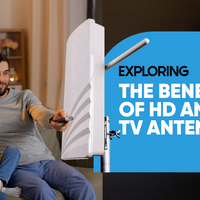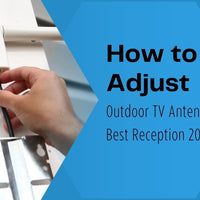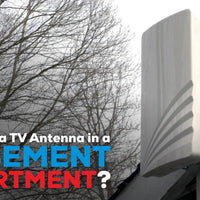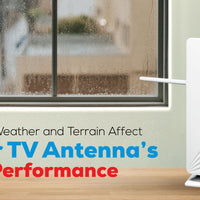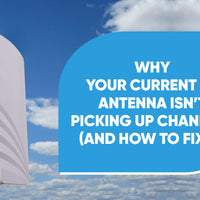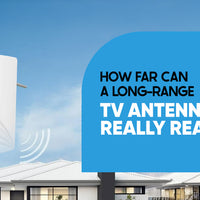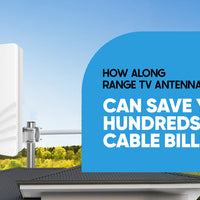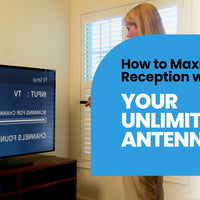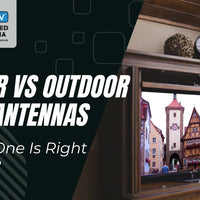Summary:
-
Frequent signal issues, including pixelation, freezing, or dropouts, indicate an antenna upgrade is needed.
-
Lost or missing channels, even after rescanning, suggest poor reception capabilities.
-
Physical damage, such as rust, bent elements, or loose mounting, can reduce performance.
-
Environmental changes, including new obstructions or extreme weather, can impact signal strength.
-
Upgrading to a modern antenna improves reception quality, adds more channels, and ensures compatibility with current broadcasting standards.
Television antennas play a crucial role in delivering high-quality entertainment without the need for expensive cable or satellite subscriptions. However, as technology evolves and external factors impact signal reception, an outdated or faulty antenna can lead to a frustrating viewing experience.
Issues such as pixelation, missing channels, or fluctuating signals often indicate that the current antenna is no longer effective. Identifying these warning signs early can help in selecting a more advanced antenna that ensures consistent reception, better picture quality, and broader channel availability. This guide outlines six key indicators that it may be time for an upgrade.
1. Poor Reception Quality
Antenna reception is a critical factor in maintaining a stable and clear TV signal. When reception issues occur frequently, it may be time for a replacement.
Frequent Pixelation or Freezing
-
Images breaking into blocks or freezing indicate weak or inconsistent signals.
-
This issue is often caused by outdated technology or an obstruction affecting signal strength.
Complete Signal Dropouts
-
Channels disappearing intermittently suggest an unstable connection.
-
Signal dropouts can be particularly common in older antennas or those affected by weather damage.
Poor Picture Quality
-
Blurry, grainy, or distorted images, even on HD channels, indicate inefficiency in capturing digital signals.
-
Modern antennas, like Unlimited Antenna, are designed to deliver crisp 4K resolution for enhanced clarity.
A high-quality antenna with a multi-directional design and strong reception range can significantly reduce these issues. Explore Unlimited Antenna!
2. Signal Strength Fluctuations
Stable signal strength is essential for uninterrupted TV viewing. If fluctuations occur frequently, it may indicate an antenna that is struggling to maintain a consistent connection.
Inconsistent Signal
-
Sudden changes in signal strength, especially during different weather conditions, suggest an outdated or weakened antenna.
"Searching for Signal" Messages
-
TVs frequently displaying this error message indicate that the antenna is not capturing signals effectively.
-
This issue can be resolved by upgrading to a more reliable, long-range antenna.
3. Missing Channels
Antenna technology should provide access to all available free-to-air channels. If channels are missing, it could indicate a problem with reception.
Inability to Receive Certain Channels
-
Channels that were previously accessible but are now missing suggest a declining signal capture capability.
Fewer Channels After a Rescan
-
Rescanning should restore missing channels, but if it does not, the antenna may no longer support the necessary frequencies.
-
Upgrading to a wide-range antenna like Unlimited Antenna ensures access to both local and national networks.
4. Physical Damage to the Antenna
Over time, exposure to outdoor conditions or improper handling can degrade antenna performance.
Visible Damage
-
Rust, bent elements, or detached mounting can weaken reception.
-
An antenna in poor condition will struggle to maintain a stable signal.
Wear and Tear
-
Aging antennas may not be able to capture signals efficiently due to deteriorating internal components.
-
Replacing the antenna ensures access to modern technology with enhanced durability.
5. Environmental Changes
Surroundings can significantly impact how well an antenna receives signals. If changes have occurred, they might be obstructing reception.
New Obstructions
-
Construction projects, growing trees, or newly erected buildings can block signal pathways.
-
Relocating the antenna or upgrading to a more powerful one can help overcome these obstacles.
Weather-Related Issues
-
Storms, strong winds, and heavy snowfall can interfere with reception or physically damage the antenna.
-
Modern antennas, such as Unlimited Antenna, feature weather-resistant coatings to withstand environmental conditions.
Choose an antenna with a durable, weatherproof design to ensure stable reception in all conditions. Shop Unlimited Antenna!
6. Outdated Antenna Technology
As broadcasting technology advances, older antennas may struggle to keep up with modern transmission standards.
Incompatibility with Modern Signals
-
Digital signals and 4K broadcasting require antennas with updated capabilities.
-
Older models may not support high-definition or multi-directional reception.
Lack of Advanced Features
-
Newer antennas include built-in amplifiers, DVR functionality, and multi-TV connectivity to enhance the viewing experience.
-
Upgrading to a modern antenna ensures access to the latest features.
Why Upgrading Your Antenna Matters
Replacing an outdated or malfunctioning antenna can significantly improve television viewing. A modern antenna provides better reception, access to more channels, and a more reliable signal.
Improved Signal Quality
A stronger antenna enhances reception, reducing pixelation and dropouts for a seamless viewing experience.
Access to More Channels
Modern antennas, like Unlimited Antenna, capture local, national, and HD channels without requiring a cable subscription.
Durability and Reliability
Weatherproof coatings, advanced signal processing, and long-range reception ensure a stable connection year-round.
Cost Savings
Eliminating cable or satellite subscriptions can save hundreds of dollars annually while still providing high-quality entertainment.
Conclusion
Television reception issues, missing channels, and physical damage to an antenna indicate that an upgrade may be necessary. A modern antenna enhances signal strength, increases channel availability, and supports advanced features for a superior viewing experience.
Upgrading to a high-quality antenna ensures uninterrupted access to TV channels without the hassle of weak reception. Selecting a model with a strong signal range, weather resistance, and compatibility with all TVs guarantees long-term performance.


